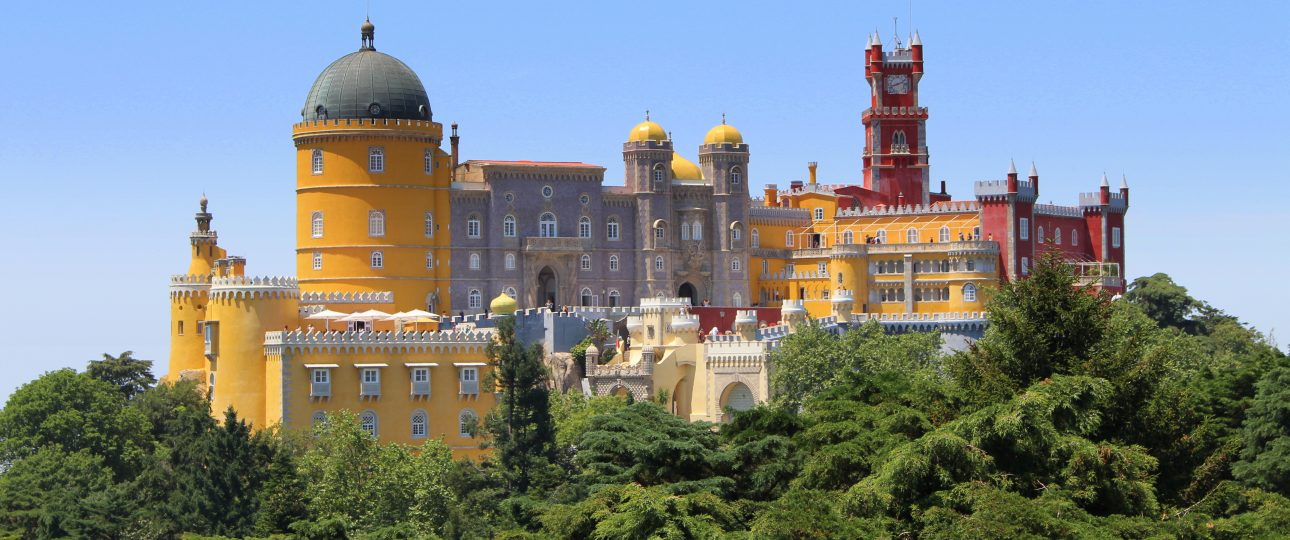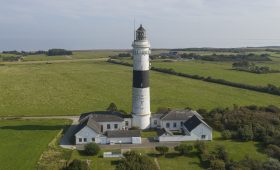Introduction to Sintra
Sintra, located in the Serra de Sintra mountains about 28 kilometers northwest of Lisbon, is a town that captivates with its blend of natural beauty and architectural splendor. Known for its colorful palaces, lush gardens, and dramatic landscapes, Sintra has been a source of inspiration for poets and travelers alike. Whether you’re interested in history, architecture, or nature, Sintra offers a rich tapestry of experiences.
Why Visit Sintra?
Sintra’s allure lies in its unique combination of cultural and natural elements:
- UNESCO World Heritage Site: Recognized in 1995 for its cultural landscape, Sintra exemplifies the harmonious integration of human-made structures with the natural environment.
- Architectural Marvels: The town boasts several remarkable palaces and castles, each with its own distinct style and historical significance.
- Natural Surroundings: Nestled within the Sintra-Cascais Natural Park, the area offers scenic hiking trails, panoramic views, and diverse flora and fauna.
- Climate: With mild summers and winters, Sintra is a pleasant destination throughout the year.
A Brief History of Sintra
Human activity in Sintra dates back to the Paleolithic era. During the 8th century, it became part of Al-Andalus, the Muslim-ruled Iberian Peninsula, and the Moors constructed the Castle of the Moors. This fortress remained under Moorish control until 1147 when it was captured by crusader forces.
Sintra gained prominence in the 19th century as a retreat for the Portuguese royal family, leading to the construction of iconic palaces like the Pena Palace and the National Palace of Sintra. The town’s romantic allure was celebrated by figures such as Lord Byron and Richard Strauss, further cementing its status as a cultural and historical treasure.
Getting to Sintra
Traveling to Sintra is convenient, whether you’re coming from Lisbon or other parts of Portugal. Here are the main options:
By Train
The train from Lisbon is a popular choice, taking about 40 minutes from Rossio Station. Trains run frequently, and the Viva Viagem card can be used for this journey, making it an affordable and efficient option.
By Car
Driving from Lisbon to Sintra takes approximately 30 minutes. Renting a car allows for flexibility in exploring the surrounding areas, with several parking options available in Sintra.
Local Transportation
Once in Sintra, you can navigate the town using:
- Buses: Local buses connect major attractions, offering convenient access to sites like Pena Palace and the Moorish Castle.
- Taxis and Rideshares: Services like Uber are available for easy transportation around the town.
- Walking: Many attractions are within walking distance, allowing for leisurely strolls through Sintra’s charming streets.
Top Attractions in Sintra
Sintra is home to several noteworthy sites that reflect its rich history and architectural diversity:
Pena Palace
The Pena Palace is a striking example of 19th-century Romanticism, combining Gothic, Manueline, and Moorish influences. Its vibrant colors and whimsical design make it a standout landmark, offering visitors breathtaking views of the surrounding landscape.
Moorish Castle
The Moorish Castle, dating back to the 8th century, provides a glimpse into Sintra’s medieval past. Its walls and towers offer panoramic views, rewarding those who make the climb with stunning vistas.
National Palace of Sintra
Located in the town center, the National Palace of Sintra is renowned for its distinctive twin chimneys and Manueline architecture. Once a royal residence, it houses a collection of historical artifacts and beautifully decorated rooms.
Quinta da Regaleira
The Quinta da Regaleira is an enchanting estate known for its mystical gardens, grottoes, and the famous Initiation Well. The estate’s intricate symbolism reflects the owner’s interest in alchemy and the occult.
Monserrate Palace
The Monserrate Palace showcases eclectic architecture, blending Gothic, Indian, and Moorish styles. Surrounded by lush gardens, it offers a tranquil escape from the more crowded attractions.
Best Time to Visit Sintra
The ideal times to visit Sintra are during the spring (March to May) and fall (September to October) when the weather is pleasant and tourist numbers are lower. Summer can be hot and crowded, while winter is mild but may experience some rain.
Local Cuisine and Dining Options
Sintra’s culinary scene offers a variety of local dishes and treats:
Traditional Dishes
- Travesseiros: Puff pastry sweets filled with almond cream, a local favorite.
- Queijadas de Sintra: A unique cheese tart that is a regional specialty.
- Grilled Sardines: A staple of Portuguese cuisine, often served fresh and perfectly grilled.
Recommended Restaurants
Consider dining at these popular spots in Sintra:
- Tascantiga: A cozy venue offering delicious tapas.
- Cantinho Gourmet: Known for its local specialties and inviting atmosphere.
- Restaurante da Adraga: A beachfront restaurant with stunning views and fresh seafood.
Practical Tips for Visiting Sintra
Maximize your visit to Sintra with these practical tips:
- Wear Comfortable Shoes: Sintra’s cobblestone streets and hilly paths make comfortable footwear essential.
- Arrive Early: To avoid crowds at popular sites like Pena Palace, plan to arrive early in the day.
- Stay Hydrated: Bring water, especially if you plan to hike or walk extensively.
- Check Opening Hours: Verify the opening hours of attractions in advance to plan your itinerary effectively.
Summary of Key Facts About Sintra
- Sintra is a UNESCO World Heritage Site celebrated for its cultural landscape.
- The town features iconic landmarks such as Pena Palace, Moorish Castle, and Quinta da Regaleira.
- It is easily accessible by train or car from Lisbon.
- Spring and fall are the best times to visit for pleasant weather and fewer crowds.
- Local cuisine includes Travesseiros, Queijadas de Sintra, and Grilled Sardines.
- Comfortable walking shoes are recommended due to the town’s hilly terrain.
Conclusion
Sintra enchants visitors with its rich history, stunning architecture, and breathtaking landscapes. Whether exploring its palaces or hiking through its natural beauty, the town promises a memorable experience. Enjoy the local cuisine, engage with the friendly locals, and immerse yourself in the unique atmosphere that makes Sintra truly special.




